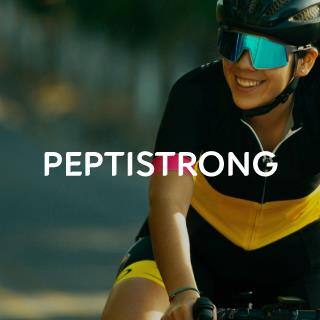Methionine hydroxy analogue (DL-HMTBA) and DL-methionine can be replaced with 67 % and 90.5 % of L-methionine
2020년 07월 15일
- Function
- L-Met
- Metabolism
- Nutrition
Methionine isomers, precursors and their conversion to L-methionine
Methionine is the first limiting amino acid in poultry and one of the first limiting amino acids in other species. Usual corn-soy diets are limited in methionine. Thus, supplementing methionine to feed in order to balance amino acids has a long history in animal nutrition.
The first methionine sources which became commercially available were DL-methionine and its hydroxy analogue (DL-HMTBA or MHA-FA or MHA-Ca). These methionine sources are produced from nonrenewable resources through chemical synthesis, consequently D-Met and DL-HMTBA are not natural sources of methionine. Thus D-Met and DL-HMTBA need to be transformed to L-methionine by the animal itself which costs energy, enzyme activities, amino acids (for amination of Keto-methionine) and cellular capacities (Fig. 1).
However, nowadays L-methionine is also commercially available (in high volumes) which is produced from renewable resources. Crystalline L-methionine provides the opportunity of relieving farm animals from the extra unnecessary job to convert these isomers and precursors to L-methionine.
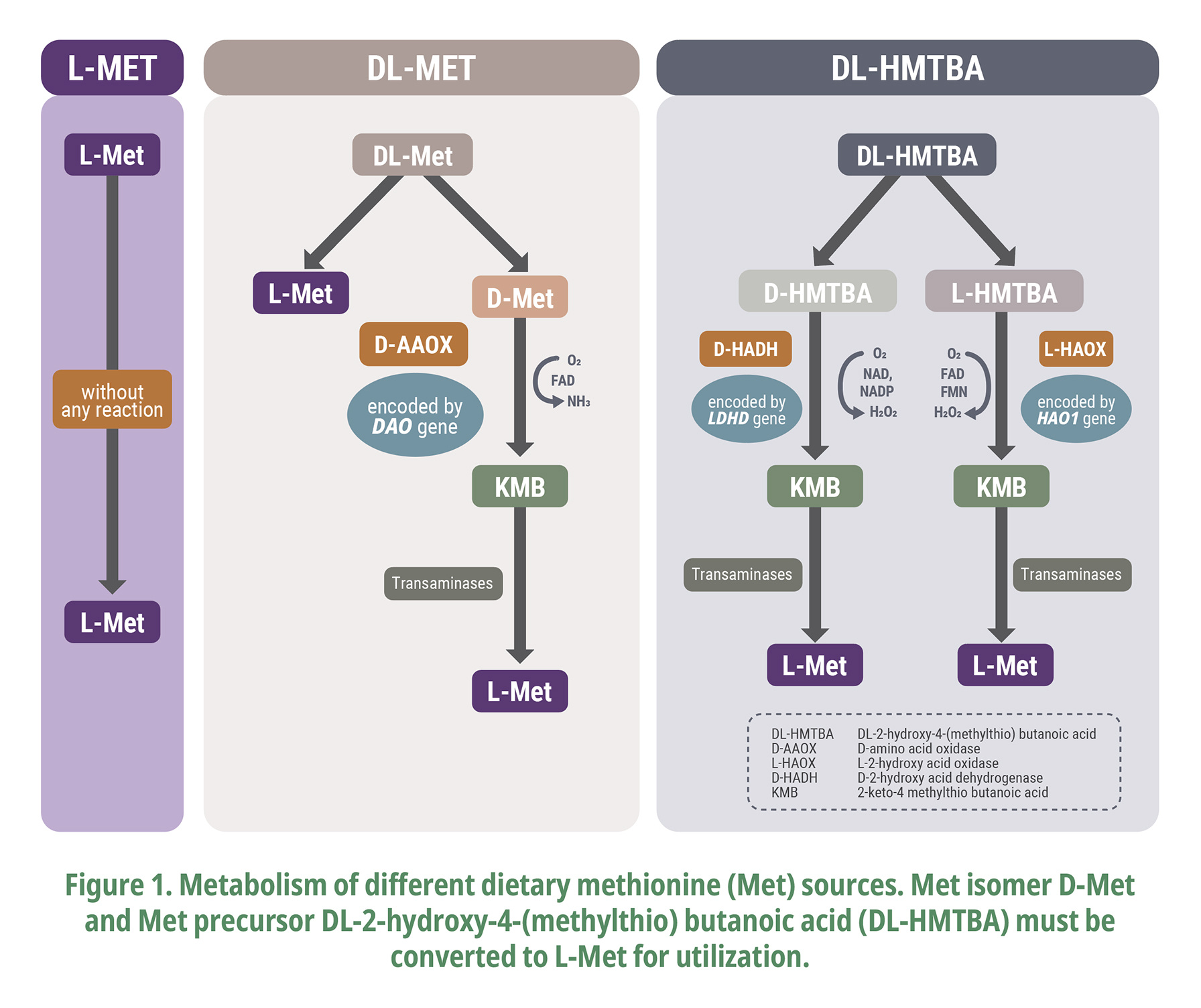
Bioavailability of methionine sources
End-users are always confronted with the question of bioavailability of methionine sources because of commercial and nutritional interests. Professor Baker is the major cited scientist when it comes to bioavailability of methionine sources (Katz and Baker, 1975). L-methionine is a better source of sulfur amino acids than D-methionine Baker wrote and reported a bioavailability of 90 % for D-Met in chicken (Baker, 1994). More recent publications from Shen et al. (2015) as well as Esteve-Garcia and Khan (2018) found a lower bioavailability for DL-methionine compared with L-methionine (71 and 77% vs. L-Met 100%) in modern broilers (Fig. 2).
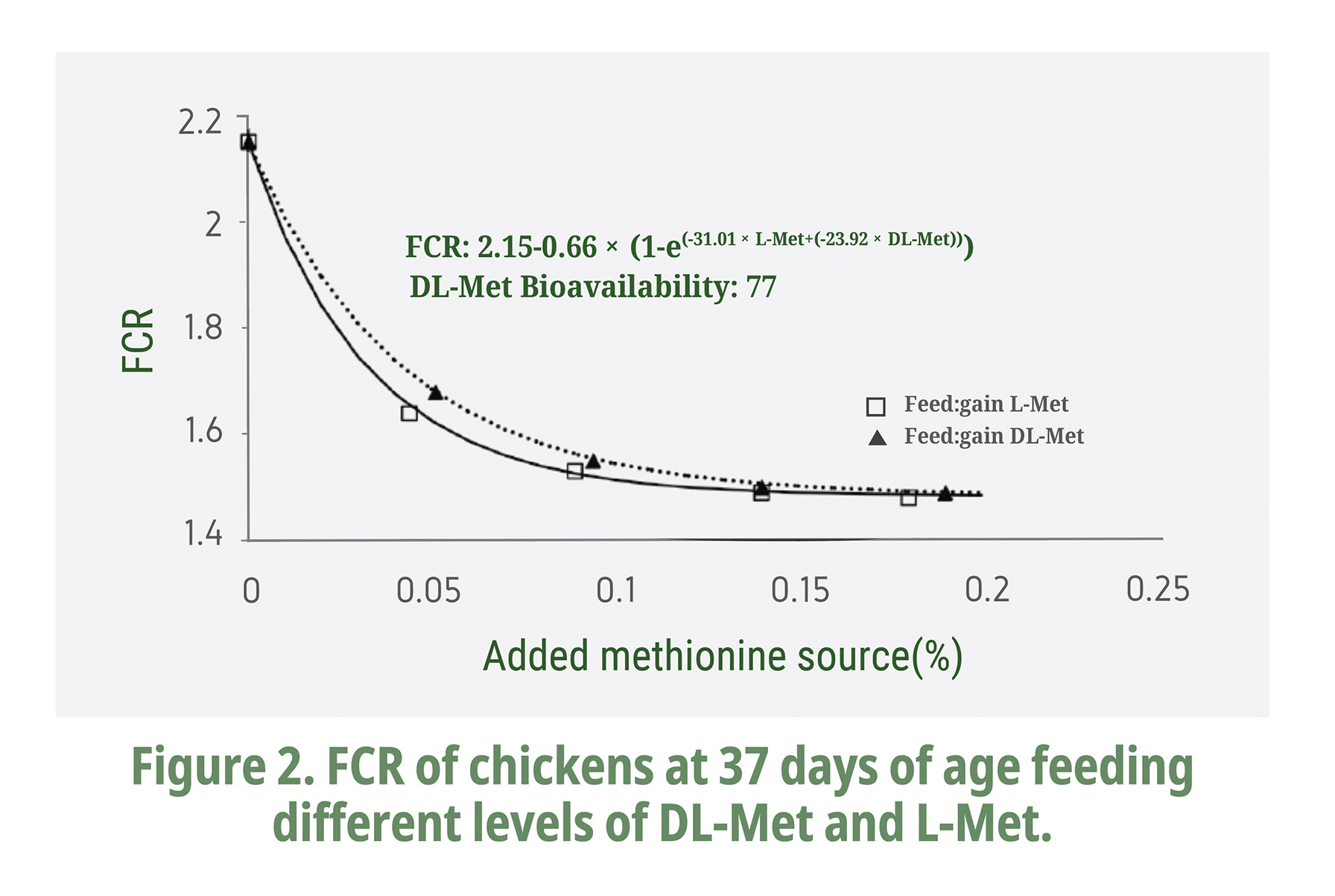
DL-HMTBA has a lower bioavailability compared with DL-Met varying from 45 to 88 % for MHA-FA (MHA-FA contains 12 % water) depending on parameter (body weight, FCR, or breast muscle yield), starting level of sulfur amino acid and the applied estimation model (Sauer et al. 2008). On average, commercially accepted levels of bioavailability are 77 % for DL-HMTBA compared with DL-Met.
Radio-labeled methionine sources
To better understand why the differences between methionine sources, Saunderson publications are very useful (Saunderson, 1985 and 1987). Saunderson (1985) published a paper using radio-labeled methionine sources. DL-Met was excreted at 10 % of the given dosage. DL-HMTBA was excreted at 21 % of given dosage while L-Met was excreted only at 2 % of the given dosage (Fig. 3).

Moreover, DL-Met had the highest oxidation rate (5.5 % of the given dosage). DL-HMTBA was oxidized at 3-7 % of given dosage (5.0 1.8 %) while L-Met oxidation was limited to 4.2 % of the given dosage (Fig. 4).
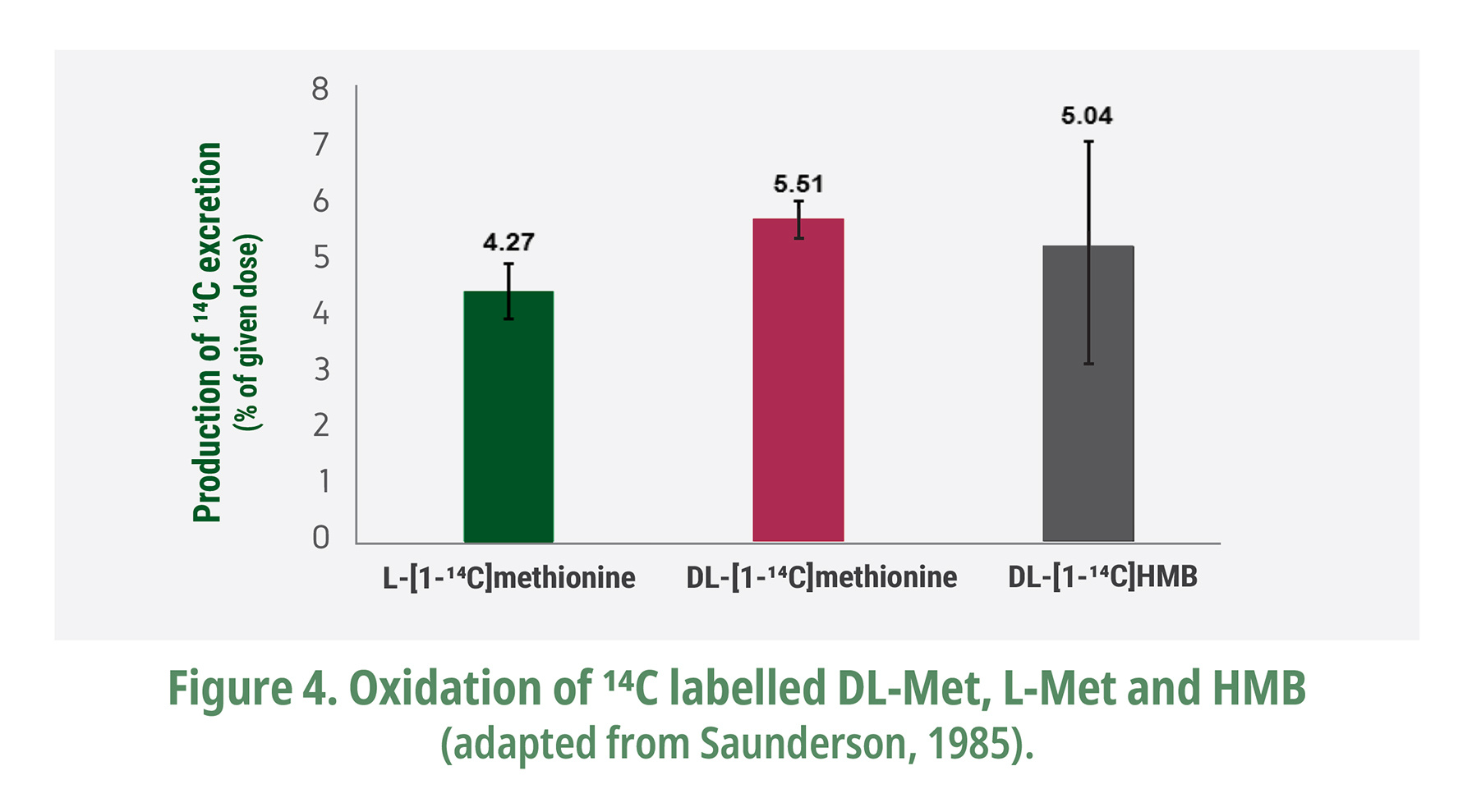
Interestingly, sum of excretion, oxidation and water content of DL-HMTBA would reduce the bioavailability of DL-HMTBA to 62 % (Formula 1).

For DL-methionine, sum of excretion and oxidation would reduce the bioavailability of DL-Met to 84.5 % (Formula 2).

L-Met metabolism is the standard and the natural metabolic process. L-Met was also excreted (1.8 %) and oxidized (4.2 %). Consequently, we must consider additionally the L-Met metabolism (excretion and oxidation) of 6 %, leading to 90.5 % and 67 % as conservative bioavailability values for DL-Met and DL-HMTBA compared with L-Met without considering methionine efficacy for protein synthesis in muscle tissues or other organs. A higher deposition of L-Met in breast muscle and in the legs (Fig. 5) were observed compared with DL-Met and DL-HMTBA (Saunderson, 1985 and 1987).
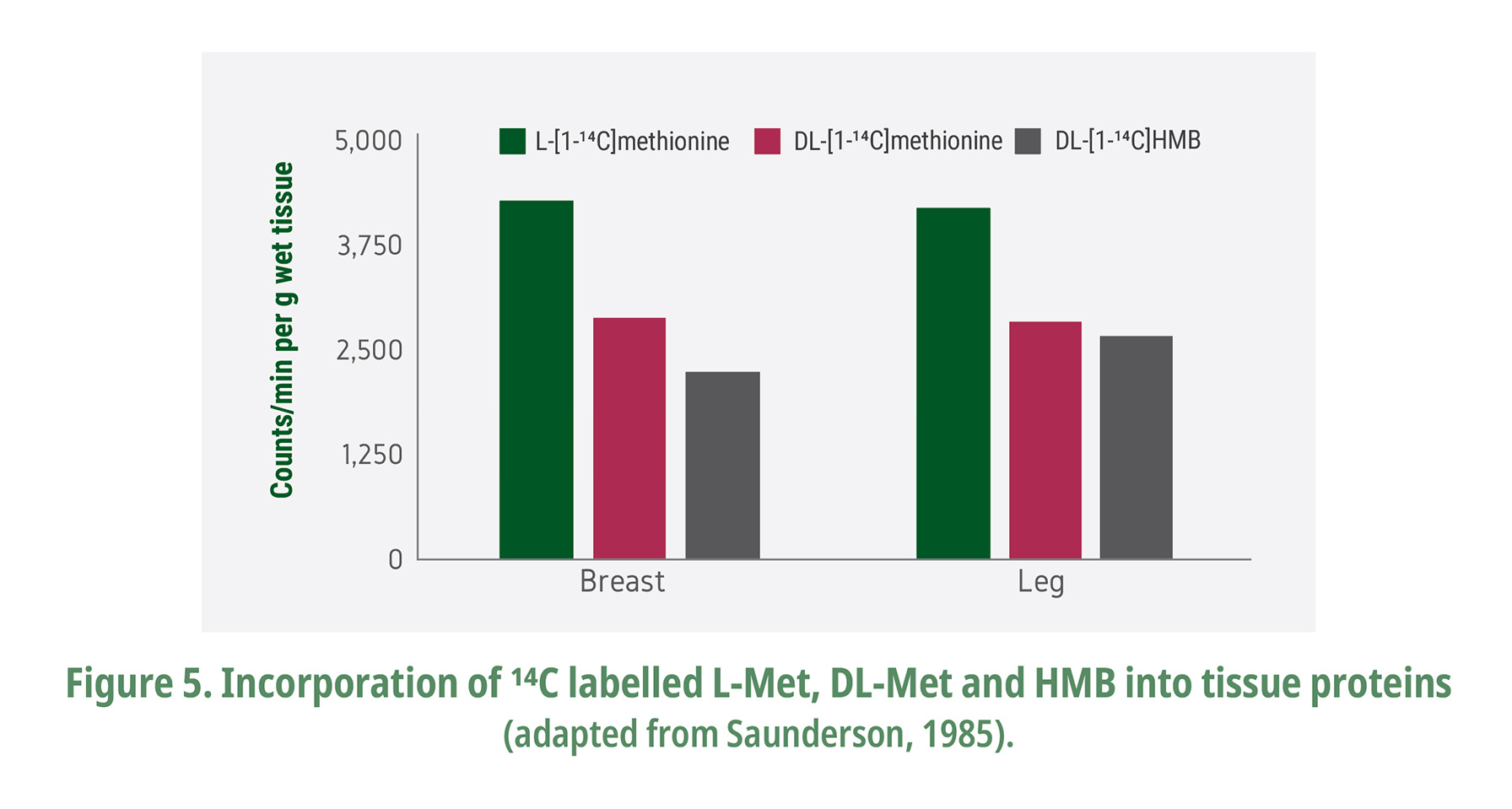
Similar results were reproducible under methionine deficiency and under feed restriction (Saunderson, 1987) proving independence of the excretion of the methionine sources from the level of feeding or levels of sulfur amino acids in feed (Saunderson, 1987). Oxidation was affected by feed restriction and by methionine deficiency (Saunderson, 1987). DL-Met oxidation increased to 10% of the given dose under limited feeding condition. In general, DL-Met had the highest oxidation rate among the methionine sources.
CONCLUSION
DL-HMTBA and DL-Met could be easily replaced with 67 % and 90.5 % L-Met without compromising performance of animals.








